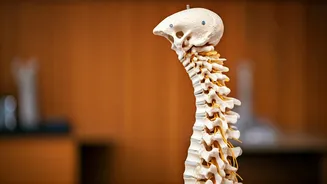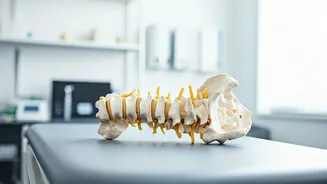Pelvic Tilts Unveiled
Pelvic tilts are an excellent starting point for anyone dealing with back pain. To perform this exercise, lie on your back with your knees bent and feet
flat on the floor. The goal is to gently rock your pelvis, flattening your lower back against the floor and then arching it slightly. Imagine your pelvis as a bowl of water; when you tilt it forward, the water spills forward, and when you tilt it backward, the water spills backward. Focus on controlled movements, ensuring you feel the stretch and engagement of your abdominal and lower back muscles. This exercise helps to strengthen your core and improve spinal stability, crucial for preventing future back pain. Perform these slowly, holding each position for a few seconds. Do this exercise several times to enhance its effectiveness, starting with five to ten repetitions. This exercise is gentle and can be easily integrated into your daily routine, promoting better posture and reducing strain on the lower back.
Knee-to-Chest Stretches
This stretch is a soothing way to relieve tension in the lower back. Begin by lying on your back, knees bent, and feet flat on the floor. Gently bring one knee towards your chest, clasping your hands around the shin or behind the thigh. Hold this position for about 15–30 seconds, feeling the stretch in your lower back. Repeat this with the other leg. You can also perform a double knee-to-chest stretch by bringing both knees towards your chest simultaneously. This stretch helps to elongate the spine and release pressure on the lower back muscles. It also promotes circulation and can help alleviate stiffness. Remember to breathe deeply throughout the stretch to maximize its benefits. Perform this exercise regularly, a few times a day, particularly if you have been sitting for extended periods. This simple stretch is a powerful tool in managing and preventing back pain, contributing to a more comfortable and flexible spine. It is highly effective when done consistently.
Bridge Pose Benefits
The bridge pose is another effective exercise that strengthens your core and stretches your back. Start by lying on your back with your knees bent and feet flat on the floor, hip-width apart. Your arms should be resting at your sides. Slowly lift your hips off the floor, forming a straight line from your knees to your shoulders. Engage your glutes and core muscles to support your body. Hold this position for a few seconds, feeling the stretch in your back and the engagement of your core. Slowly lower your hips back to the floor. The bridge pose strengthens the muscles that support your spine, reducing back pain and improving posture. It also stimulates the abdominal organs and can help improve circulation. Repeat this exercise for a few repetitions, holding the pose for 5-10 seconds each time. This exercise is easily modified and can be adapted to various fitness levels. Regular practice can lead to significant improvements in back strength and flexibility.
Cat-Cow Flow Routine
The cat-cow stretch is a gentle, flowing exercise that increases spinal flexibility and improves posture. Start on your hands and knees, with your hands directly under your shoulders and your knees under your hips. For the cat pose, round your spine toward the ceiling, tucking your chin to your chest and engaging your abdominal muscles. For the cow pose, drop your belly toward the floor, lift your chest and head, and gently arch your back. Alternate between these two poses, moving with your breath. Inhale as you transition into the cow pose and exhale as you move into the cat pose. This dynamic stretch helps to mobilize the spine, relieve tension, and improve blood flow. It's a great exercise for reducing stiffness and improving overall body awareness. Perform this flow for several rounds, concentrating on smooth, controlled movements and deep breathing. Cat-cow is an excellent way to prepare your spine for the day. Regular practice can make a big difference in the ease of movement and in the prevention of back pain.
Spinal Twist Essentials
Spinal twists help to improve spinal mobility and reduce back stiffness. Lie on your back with your knees bent and feet flat on the floor. Extend your arms out to the sides, forming a T-shape. Gently drop your knees to one side, keeping your shoulders flat on the floor. Turn your head in the opposite direction from your knees. Hold this position for 20-30 seconds, feeling the stretch in your spine and back muscles. Repeat on the other side. This exercise improves spinal flexibility and can help release tension in the lower back. The spinal twist promotes relaxation and helps to improve blood circulation. Remember to breathe deeply throughout the stretch. Consider doing this daily, especially if you have been sitting for extended periods. This simple exercise is a great way to maintain spinal health and prevent back pain. Make sure the movements are slow and controlled to avoid injury.











